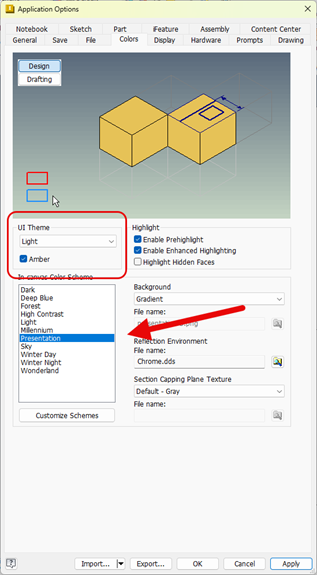
Struggling with delayed deadlines, rising project costs, or constant miscommunication? These issues frequently stem from disconnected tools and disjointed workflows, a challenge many manufacturing teams face.
While many teams understand the need to modernize, the idea of switching to a new system, such as Product Data Management (PDM), can seem risky, expensive, or too disruptive.
The hesitation is understandable, but staying with outdated systems and processes is often more painful than embracing the change.
If you're a project manager or engineer familiar with Autodesk® PDM and looking for clear and proven examples to validate its business value, continue reading to discover the advantages of expertly-implemented PDM and how leading teams are putting it to work.
PDM Isn’t Risky, Costly, or Complex as Many Think
Despite the promise of improved productivity and collaboration, many teams hesitate to adopt PDM due to various reasons. According to the 2023 State of Product Development & Hardware Design report, 50% of engineers who don’t use PDM cited cost as a primary barrier, while 42% mentioned complexity or the need for extensive maintenance as significant concerns. However, those who adopt it discover that modern PDM systems are more flexible and accessible than ever, making implementation easier than most teams expect.
A frequent concern revolves around the belief that legacy CAD files require complete updating prior to integration. In practice, most contemporary CAD platforms are compatible with older file formats. This capability enables teams to proceed with their work without the need for time-consuming rework or file conversions.
Another common assumption is that all historical data must be migrated at the initiation of a PDM project. Experts have, however, created a way around this challenge through gradual implementation. This way, teams are empowered to prioritize their most crucial files while integrating additional data incrementally. With a thoughtful rollout plan, teams can begin realizing the benefits of PDM right away, without overwhelming their resources or workflows.
“As long as the original CAD files remain accessible to the engineers or designers who need them, less frequently used or unique models can be introduced as needed, allowing the system to be up and running much sooner than if a full import and all associated validations were required upfront.”
- Forrest Judd, Senior Consulting Engineer, Hagerman & Company
Breaking the implementation into phases allows your team to focus on what matters most, minimizing disruptions while maintaining your project momentum. For a successful PDM implementation, experts perform a data audit to determine the most critical files and workflows for current operations. Subsequently, they assist teams in prioritizing initial migrations.
Rather than importing all historical data simultaneously, they steer teams toward a phased approach, which includes:
- Migrating active and high-value files first to secure immediate benefits.
- Setting up folder structures and user permissions that match how teams organize projects, share files, and collaborate day to day.
- Providing early training for core users to foster system advocacy and broader adoption.
- Leveraging integrations with existing CAD and ERP tools to prevent disruption.
How Does This Work In Practice?
Rockland Manufacturing, a leading manufacturer of construction equipment attachments, needed a better way to manage its expanding library of design data. Engineers were spending too much time searching for files, tracking revisions, and verifying data accuracy. These delays slowed down projects and increased the risk of expensive errors.
To solve these challenges, Rockland partnered with Hagerman & Company to implement Autodesk® Vault. With expert support and a structured rollout plan, they centralized their engineering data, enforced version control, and automated revision workflows.
The implementation delivered both immediate gains and long-term improvements. Engineers now spend less time on file management and more on design work. Thanks to a well-implemented PDM system, the team enjoys better control over documentation, fewer errors, and stronger collaboration across departments. Most importantly, the new system provides Rockland with a scalable and reliable data foundation to support future growth.
“The partnership has helped us perform at the highest levels over the last decade and will continue to do so in the future.”
- Don Turner, Engineering Manager, Rockland
Streamline Manufacturing Efficiency with Autodesk PDM
Prevent costly mistakes and confusion caused by fragmented document management, and empower your team with seamless collaboration using Autodesk PDM. Boost productivity and keep projects on track with centralized and efficient data control.
Discover the benefits of expertly implemented PDM for your team:
Enhance Data Visibility
Product data management systems consolidate all project-related data into a unified and secure location. This centralization provides teams with immediate access to the latest CAD files, engineering documentation, and change orders.
Version control and user permissions eliminate confusion from outdated or duplicate files. As a result, engineers, designers, and project managers can efficiently retrieve the information they require, which reduces workflow bottlenecks and supports more agile decision-making.
Moreover, PDM solutions commonly feature audit trails and metadata tracking, offering full transparency into changes made and their timestamps. This level of transparency strengthens team communication and supports quality and compliance efforts.
Simplify Change Management
Untracked design changes lead to expensive mistakes and missed deadlines. But with PDM, teams can capture every revision and approval automatically, so everyone works with the most current, approved design files. As a result:
- Change orders are handled quickly and accurately.
- Teams receive real-time updates on task completion and project status.
- Production moves forward with accurate, up-to-date data, which reduces downtime and prevents errors.
Because PDM unifies with project management and ERP systems, design modifications automatically update production schedules and material requirements. This integration maintains manufacturing alignment and averts disruptions.
Ultimately, PDM simplifies change management, keeps teams fully coordinated, and maintains project momentum.
Streamline Cross-Functional Team Collaboration
PDM software, like Autodesk Vault, centralizes all design, engineering, and manufacturing data, breaking down silos that slow product development. When every file, revision, and document is housed in a single system, teams no longer waste time hunting for the latest information or risking errors from outdated versions.
Role-based access limits team members to the data they need, which improves security without slowing them down. Automated workflows route tasks and approvals to the right people at the right stage, reducing bottlenecks and accelerating decision-making.
This level of visibility and control enables engineering, manufacturing, and project management teams to stay aligned, resolve issues faster, and maintain consistent project momentum, ultimately shortening development cycles and improving time to market.
Bridge Engineering and Lifecycle Processes with PDM and PLM
PDM connects design, engineering, and business workflows into a unified data flow to eliminate silos that hinder collaboration. This connectivity removes traditional barriers between departments, enabling more cohesive workflows and better decision-making.
One way to achieve this is by integrating PDM with Product Lifecycle Management (PLM) to provide teams with full visibility throughout the entire product lifecycle. This convergence provides teams with a structured and traceable environment to manage change, quality, and compliance. This integration not only strengthens oversight but also reduces risk by ensuring that every stage, from initial design to final delivery, is aligned and auditable.
Real-time visibility empowers teams to quickly address issues, maintain quality, and keep projects on schedule from design through delivery.
Customize PDM to Fit Your Workflow
A well-implemented PDM allows you to customize workflows to align with your engineering and manufacturing needs. Specialists can evaluate your current tools and processes, then configure PDM to suit those requirements. You can automate document creation, such as generating Excel reports, PDF drawings, or exporting 3D models as STP files. Custom workflows and automation streamline processes, improve data management, and reduce costly errors.
Achieve that Project Win with Hagerman's Connected Data Management Solutions
PDM works best when it integrates seamlessly into your workflow while simultaneously enhancing areas needing improvement. That's the Hagerman advantage. Our consultants don't simply install software. Instead, they immerse themselves in your workflows, analyze your current tools, and help you craft a system that genuinely reflects your way of working.
Should your team manage its own customizations, we provide hourly support for questions and technical direction. If you require extensive assistance, we offer full-service development, beginning with your concepts and refining them through discovery and planning.
We also support ERP integration, so your PDM system doesn’t sit in a silo. Our experts will link design data with planning, inventory, and production to support smoother operations. From user training at every level to flexible support plans, our goal is clear. We want to help you achieve results faster, with less friction, and build a strong foundation for more project wins over time.
Ready to unleash the full power of PDM for manufacturing excellence? Contact Hagerman & Company today to schedule a consultation.





Comments